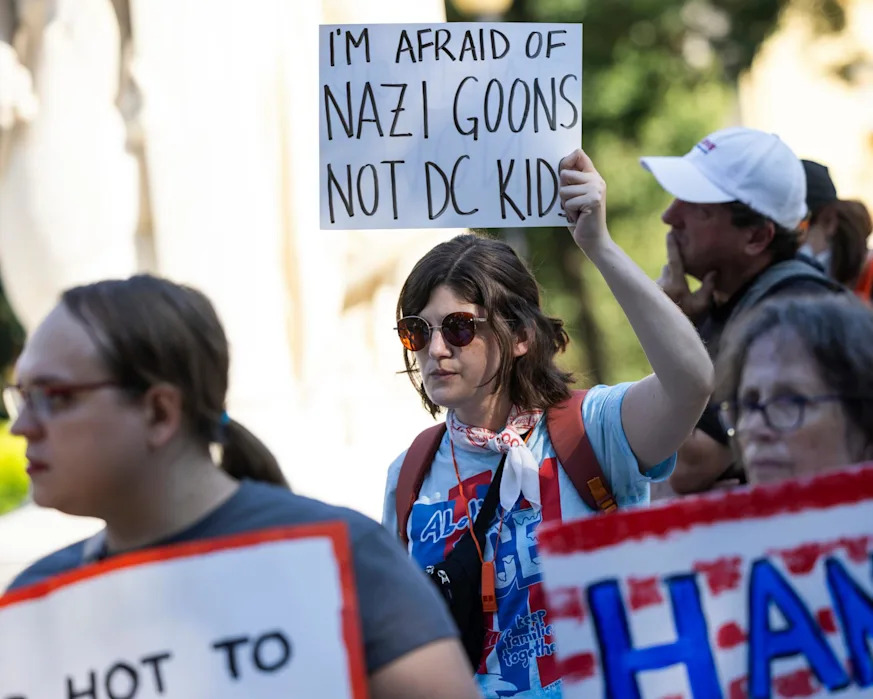
Donald Trump is deploying the national guard in Washington DC and seizing control of its police force, claiming that the nation’s capital has become “lawless” and is “one of the most dangerous cities anywhere in the world”.
The president portrayed himself as DC’s savior, vowing to rid it of “crime, bloodshed, bedlam, and squalor and worse”.
He demanded unhoused people leave the city, or face eviction.
Trump’s portrayal of Washington DC, where he has been forced to reside as president, cutting short his time in his beloved Mar-a-Lago estate in Florida, did not come as a surprise. He’s presented DC as a “nightmare of murder and crime” before, and already in February was reported to be mulling a law-enforcement crackdown.
Nor is it the only major American city in his crosshairs. “Los Angeles has been invaded and occupied by Illegal Aliens and Criminals. Now violent, insurrectionist mobs are swarming and attacking our Federal Agents to try and stop our deportation operations,” Trump said in June, while deploying the national guard to quell protests there.
Just as Los Angeles in June wasn’t overrun with insurrectionist mobs – the protests were largely confined to a few city blocks – Trump’s portrayal of crime in Washington DC has little to do with facts, but instead, are rooted in false and misleading claims about crime and homelessness, experts say.
Muriel Bowser, the Democratic mayor of DC, responded, saying: “Any comparison to a war-torn country is hyperbolic and false.”
Violent crime in DC is at a 30-year low
In his announcement on Monday, Trump focused on DC’s 2023 crime rates, saying murders that year “reached the highest rate probably ever”.
Washington DC did experience a sharp increase in homicides in 2023, with 274 killings, a jump from the 203 lives lost the year prior. It was a devastating toll for communities in the city, many of which struggled to emerge from the pandemic.
But crime trends have dramatically changed since. In January, the Metropolitan police department and US attorney’s office released a report indicating that total violent crime in DC in 2024 was down 35% from the prior year, marking the lowest rate in over 30 years.
The overall violent crime reduction included a 32% decline in homicides, a 39% decline in robberies, a 53% decline in armed carjackings and a 27% decline in assaults with a dangerous weapon, compared to 2023. The progress, US attorney Matthew Graves said at the time, was based on a strategy that focused on specific groups and drug trafficking networks targeting certain neighborhoods.
“Overall, there’s an unmistakable and large drop in violence [in DC] since the summer of 2023, when there were peaks in homicide, gun assaults, robbery, and carjacking,” Adam Gelb, president of the Council on Criminal Justice, a nonpartisan thinktank, said in a statement. The group has reported that DC’s homicide rate fell 19% in January through June of this year compared to the same period last year.
Youth arrests have declined in DC
Trump began discussing a return to federal control of the city and the use of national guard to quell street crime after a former Doge staffer, Edward Coristine, appeared to have been attacked by a group of young people last week near his car.
In statements on Monday, the president put forward a dramatic portrayal of offenses committed by minors in the capital, saying: “Caravans of mass youth rampage through city streets at all times of the day. They’re on ATVs, motorbikes. They travel pretty well.”
At the same time, he indicated he wants law enforcement to take a more aggressive response. “They fight back, until you knock the hell out of them. Because it’s the only language they understand,” he said.
DC police have made roughly 900 arrests of youth this year, nearly 20% fewer than the same timeframe last year, according to the Washington Post. Roughly 200 of those are arrests were for alleged violent crimes, with more than 40 for carjacking.
Insha Rahman, vice-president of advocacy and partnerships at Vera Institute of Justice, a nonprofit that supports reforms, noted that data shows DC has had success in reducing youth violence through community-based programs instead of expanding police operations or enacting harsher punishments. She cited a restorative justice diversion program that allows youth to avoid prosecution and make amends outside the legal system and a program focused on mediating disputes.
“DC’s most promising reductions in youth violence have come from community-led, accountability-driven interventions – not punitive crackdowns,” she said in an email.
Unhoused people are victimized at high rates
Trump’s recent push to crack down on homelessness through an executive order linked unhoused people to crime, saying: “Endemic vagrancy, disorderly behavior, sudden confrontations, and violent attacks have made our cities unsafe.”
Data, however, has consistently shown that unhoused people are more likely to be victims than perpetrators of violent crime.
In one of the largest studies of homelessness in decades, researchers at the University of California, San Francisco (UCSF) surveyed thousands of unhoused people in 2021 and 2022 and found that 36% of all participants reported experiencing physical violence during their current homelessness episode. Of those, half reported that the violence was committed by a stranger.
“People experiencing homelessness are at an extraordinarily high risk of being a victim of crime, often committed by people who are housed and people who are total strangers to them,” said Dr Margot Kushel, UCSF professor of medicine and director of the Benioff Homelessness and Housing Initiative. With unhoused people increasingly criminalized and targeted for sweeps, she added: “That victimization happens in the shadows. They don’t feel they can approach the police and report violence.”
Meanwhile, the latest available data shows that while cities across the US have been grappling with surges in homelessness since the pandemic, the Washington DC region reported a slight decrease in its unhoused population this year.
The 2025 annual survey, a rough estimate from a single day, recorded 9,659 people experiencing homelessness in the region, a decrease of 115 people from the year prior, marking a 1% drop.
The survey, conducted in January of this year, recorded a 10% decrease in unsheltered single adults, meaning people living outside. That marked the first year-over-year decline after several years of increases.
Trump’s falsehoods about other cities
Before Trump federalized law enforcement in Washington DC, the president focused on Los Angeles, deploying thousands of national guard members and marines to the city to quell protests against his administration’s immigration politics.
Then, too, Trump sought to portray the city as one in chaos.
He claimed on social media that “mobs are swarming and attacking our Federal Agents”. His FBI director, Kash Patel, said LA was “under siege by marauding criminals”.
The image was sharply contradicted by what was happening on the ground.
The sustained protests were largely confined to a 10-block area of downtown LA, and while there were violent incidents, the protests were largely considered peaceful. Police made hundreds of arrests, but many were for minor, nonviolent offenses, such as failure to disperse.
The Department of Homeland Security and the Trump-appointed US attorney for the LA region have repeatedly accused protesters and others of violence against immigration officers, but have seen some of their claims contradicted by video footage. The Department of Justice has been forced to dismiss several felony assault charges it filed against demonstrators and people accused of interfering with immigration agents.
Trump suggested on Monday that Los Angeles could see further intervention, again suggesting crime was rampant in those municipalities. So could Baltimore and Chicago, the president said.
But those cities have also seen drops in crime similar to the trends in DC. Baltimore officials last month said the city was seeing the lowest number of homicides year-to-date in five decades.
LA mayor Karen Bass said last month that the city was experiencing a roughly 20% dip in homicides in the first half of the year and was on pace for its lowest homicide total in nearly 60 years.
“Trump is wrong that ‘crime is out of control in DC’ and other cities,” Rahman said. “The cities that Trump cited at his press conference – Chicago, Baltimore, and Los Angeles – have all experienced unprecedented crime declines since 2023, before Trump took office.”
Thomas Abt, founding director of the Center for the Study and Practice of Violence Reduction at the University of Maryland, questioned Trump’s decision to have Pam Bondi, the US attorney general, and Terry Cole, the Drug Enforcement Administration administrator, take over the DC police: “If violent crime has been dropping for 18 months, it’s unclear to me how those two people – neither who have local law enforcement experience – can improve upon the good job that local law enforcement is doing.”
Pulling FBI and other federal agents away from their jobs to patrol DC also means fewer resources dedicated to serious crime, he added: “It’s not clear this will make DC any safer, and could potentially make the rest of the country less safe.”
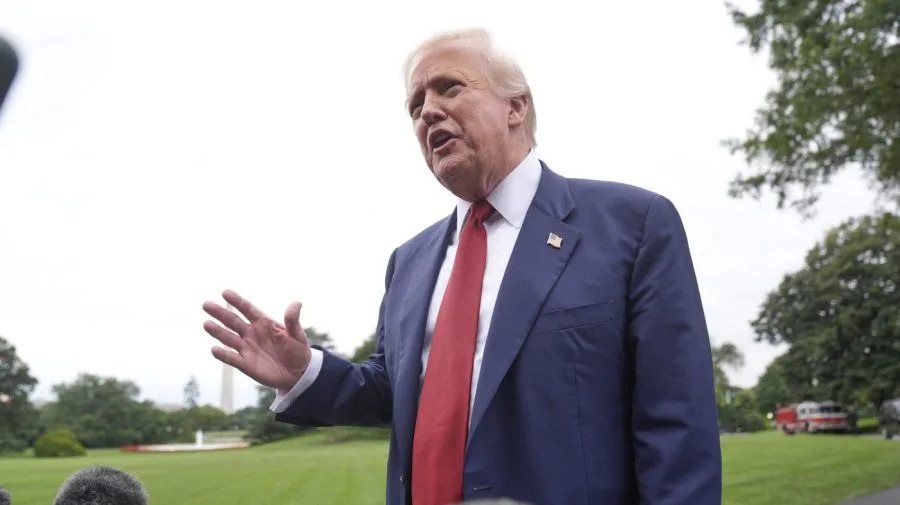

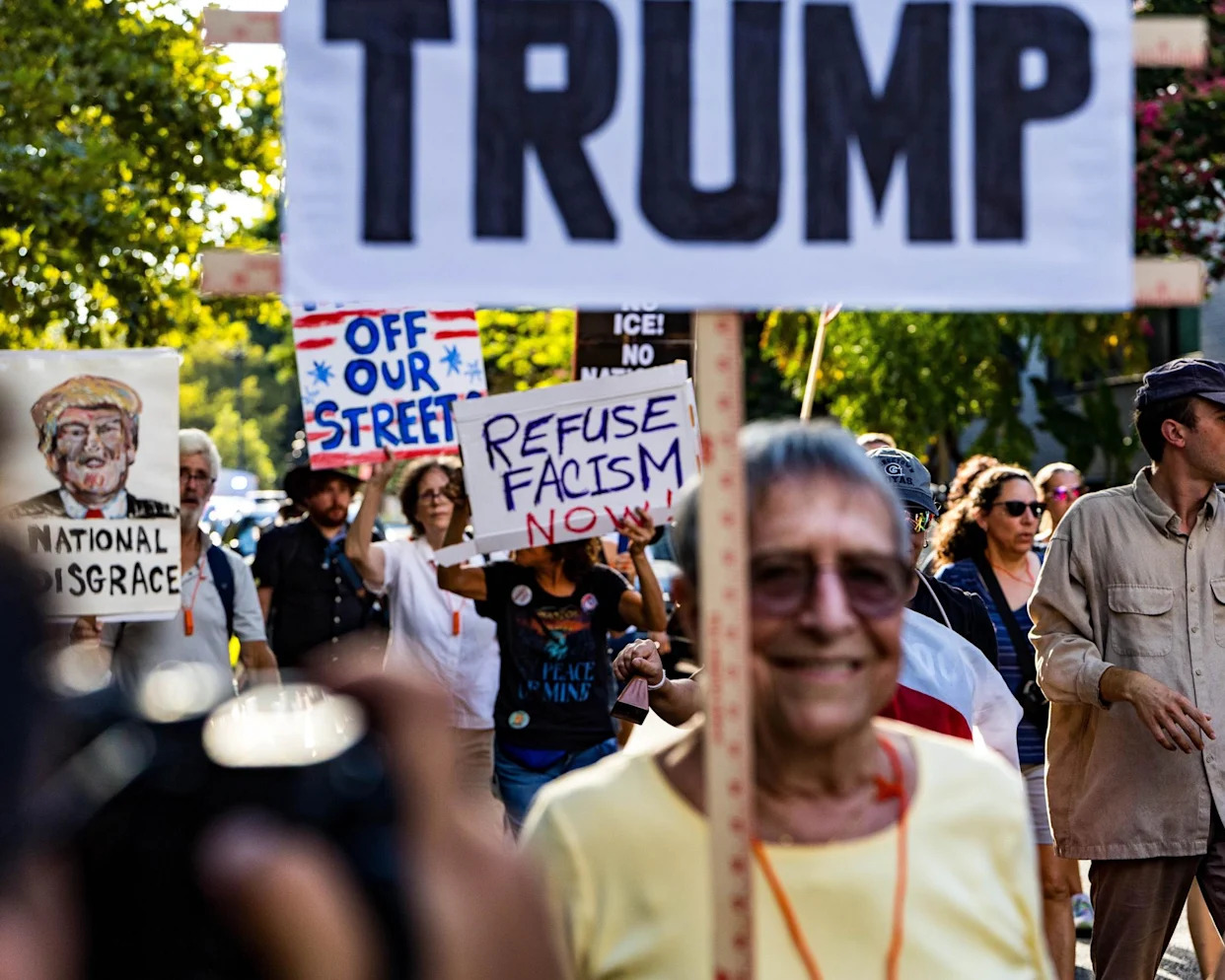
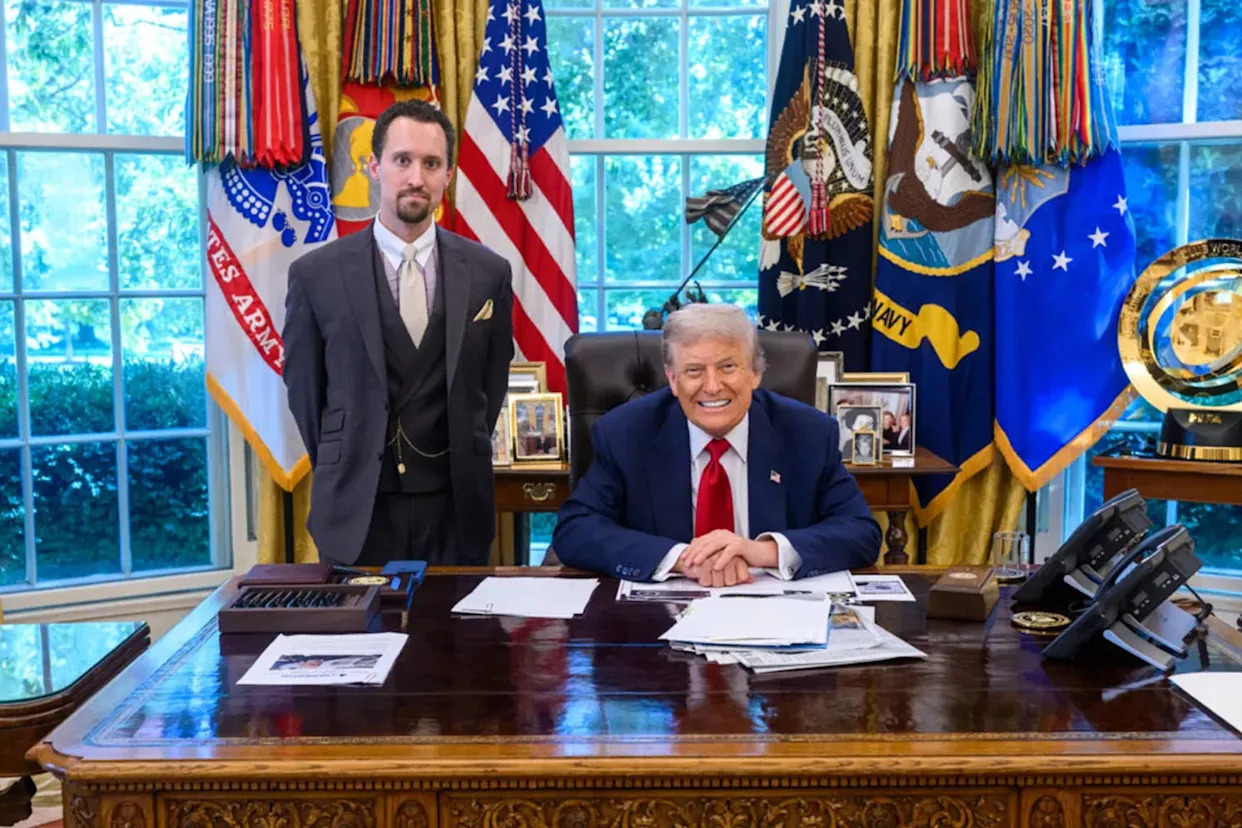
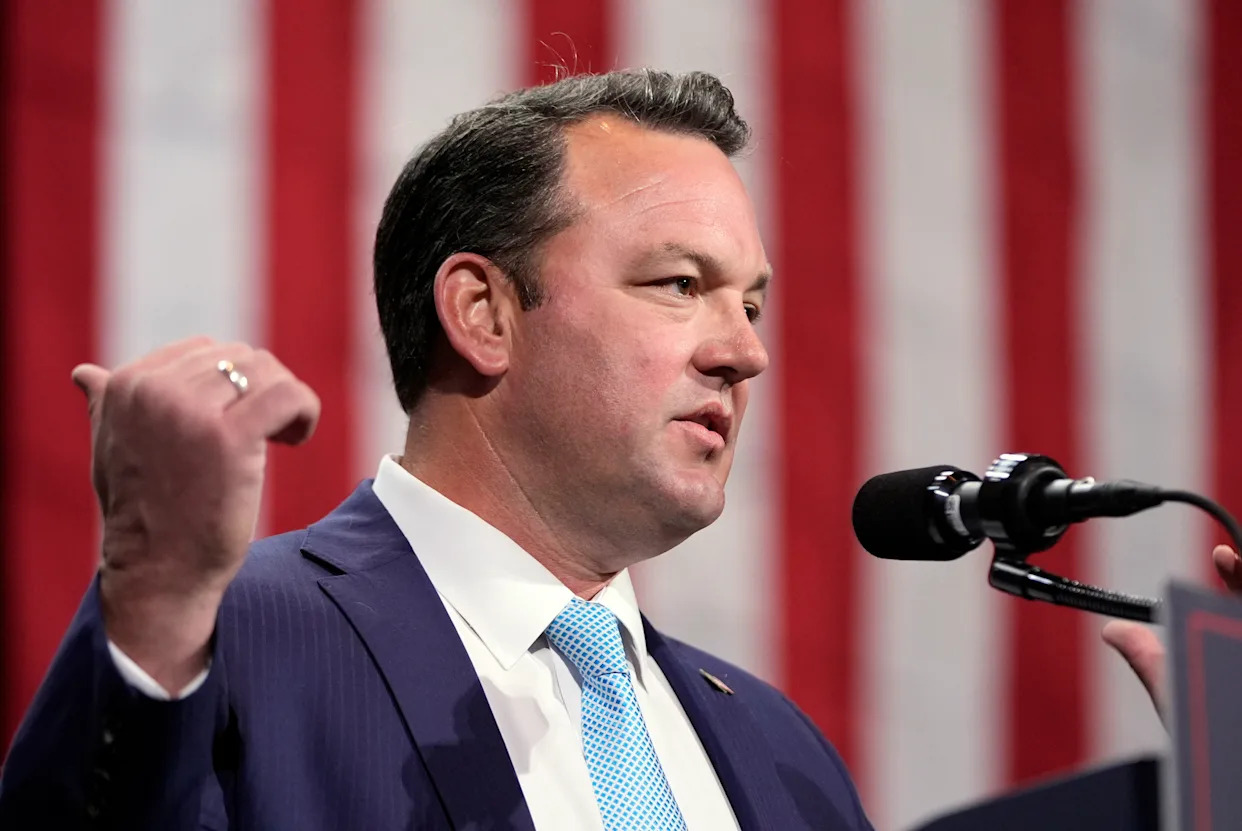
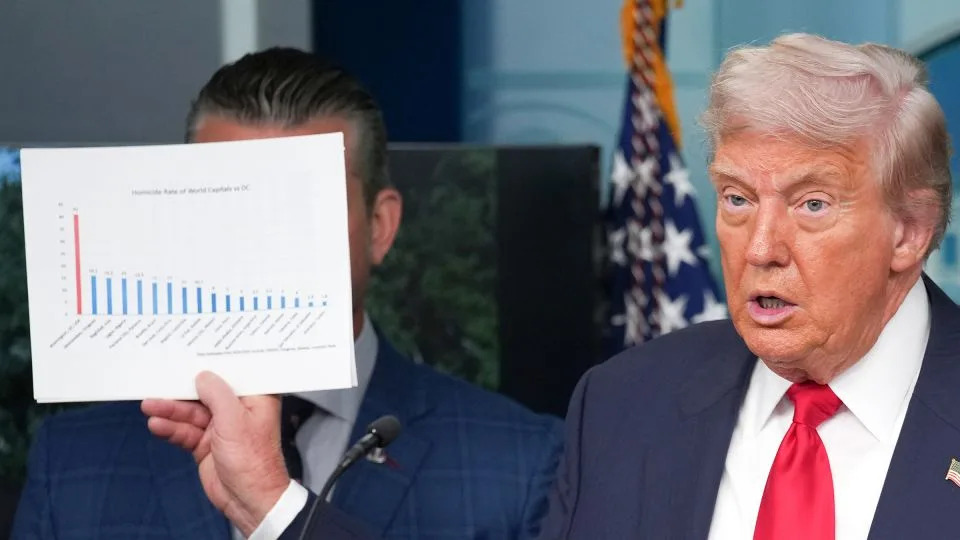
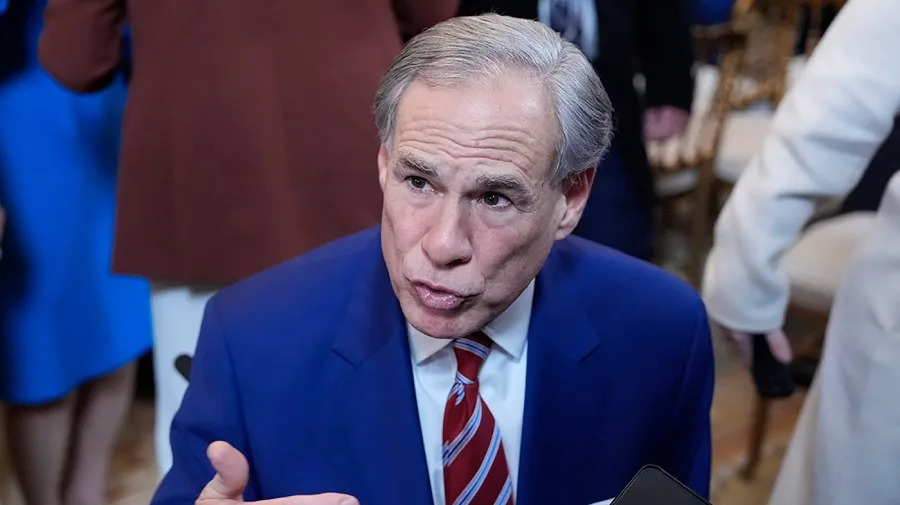
Comments